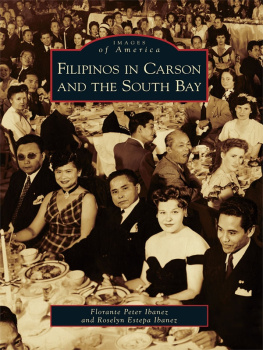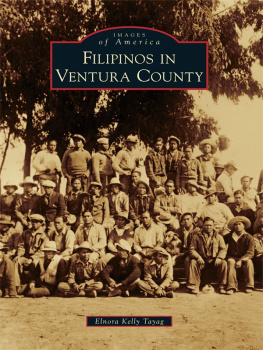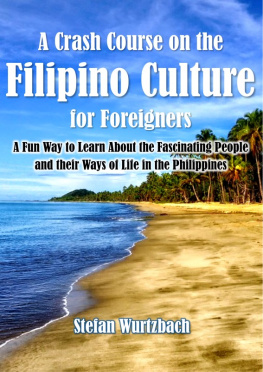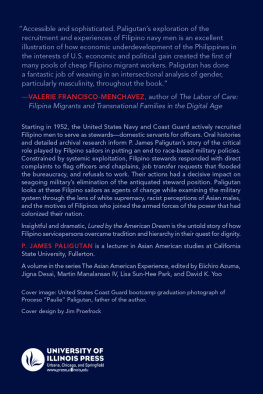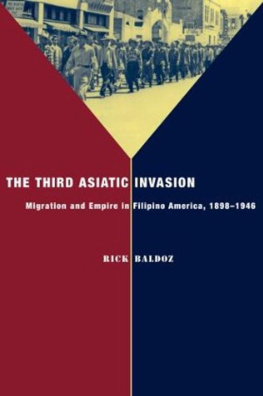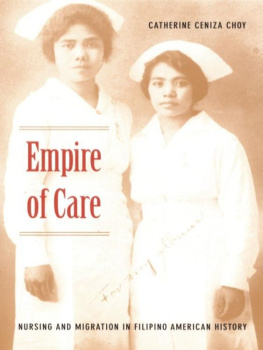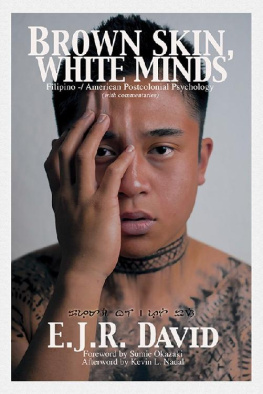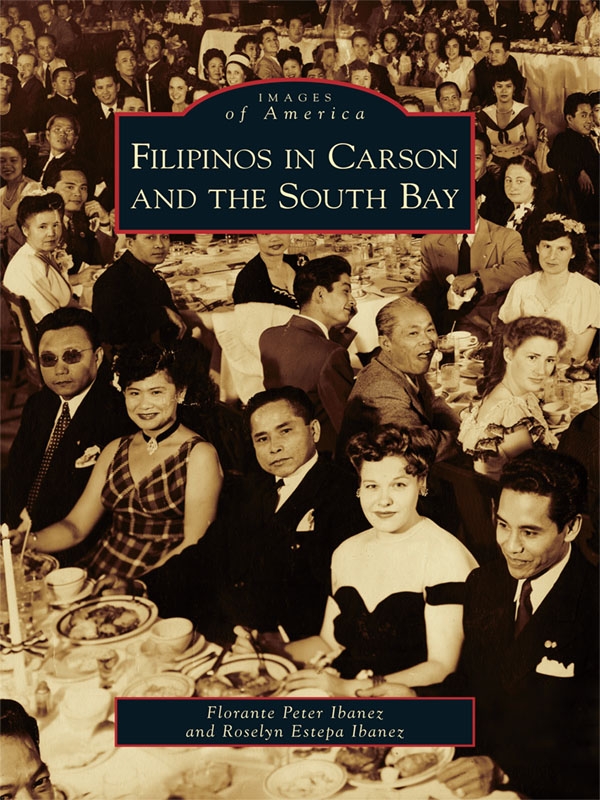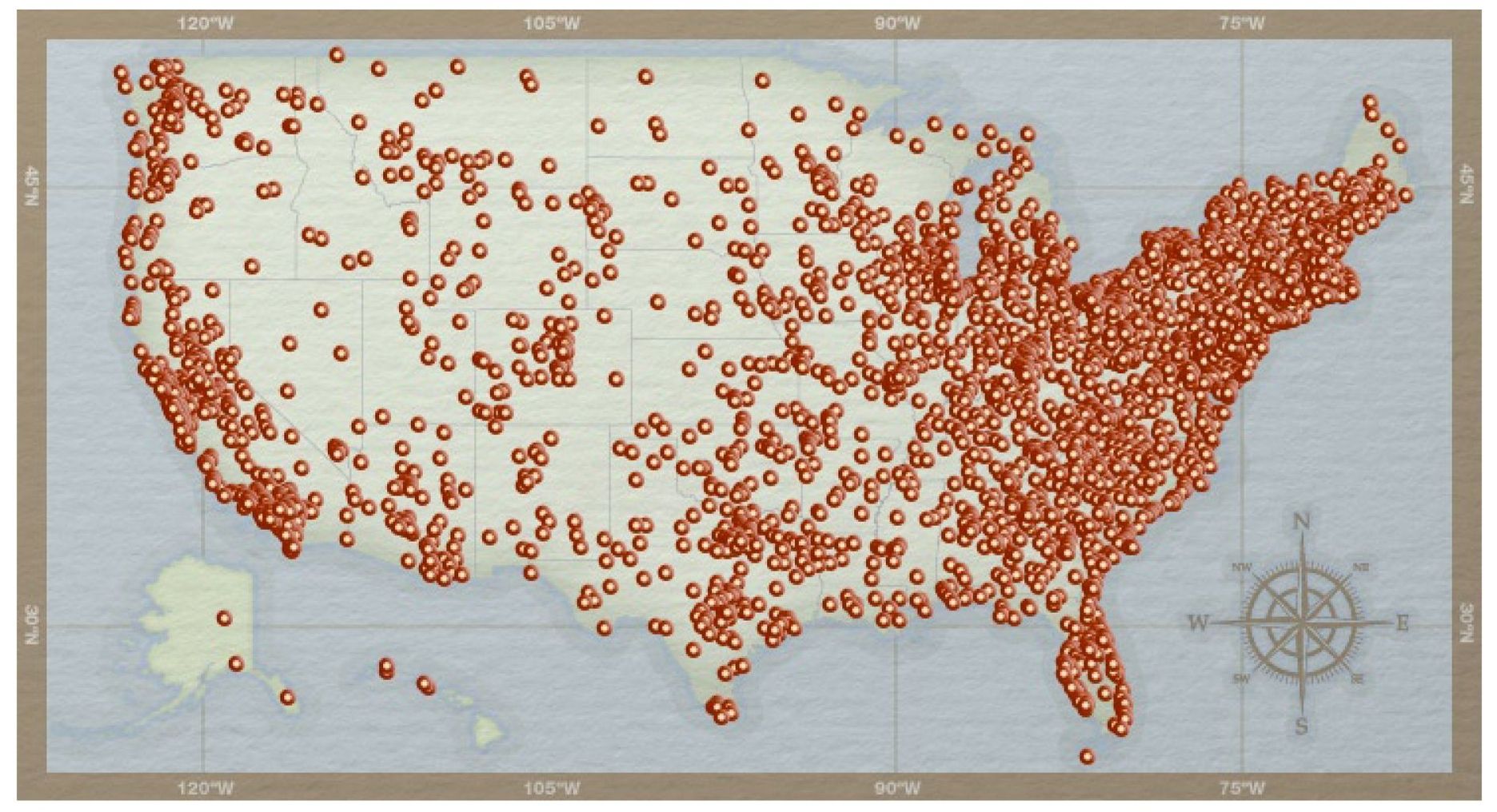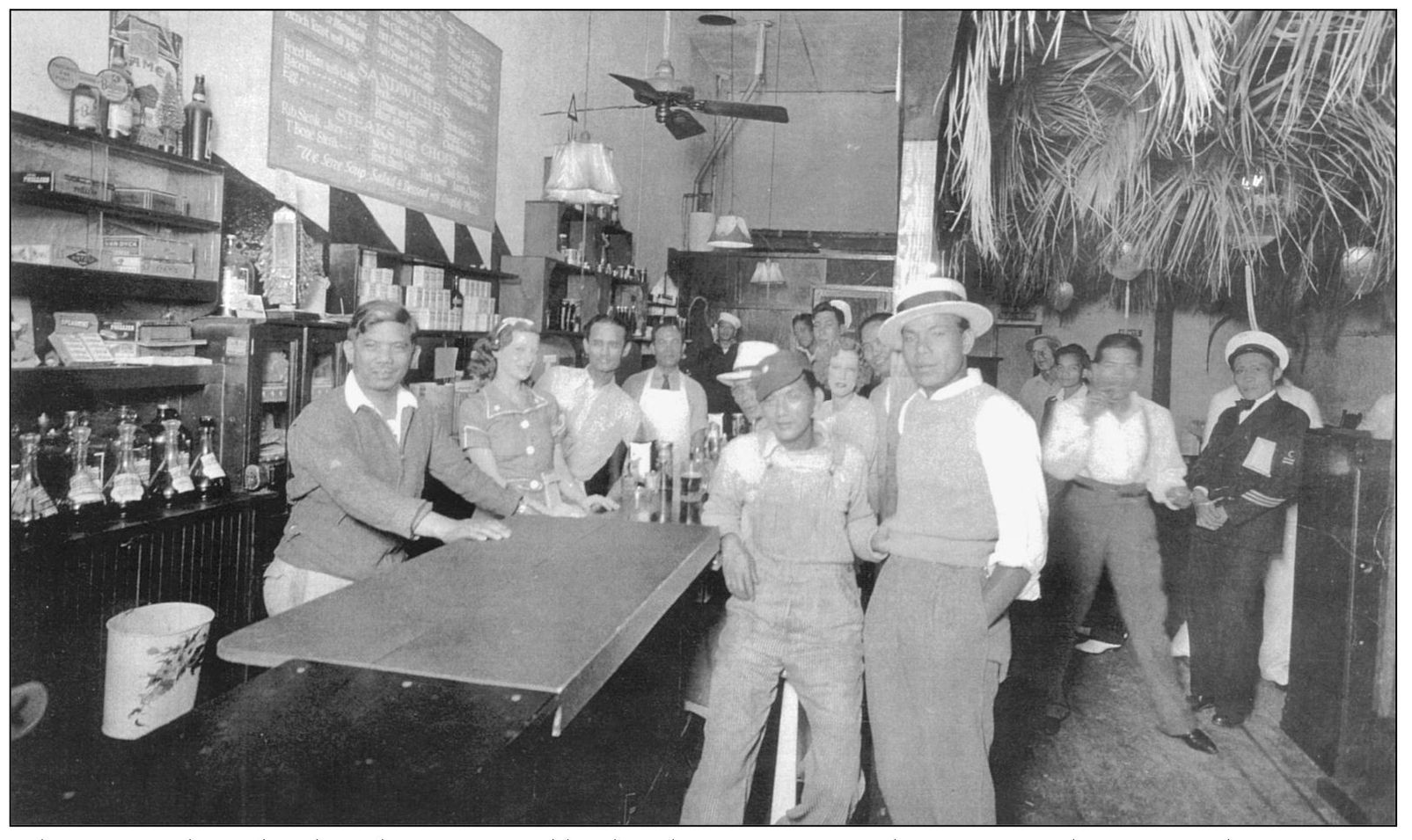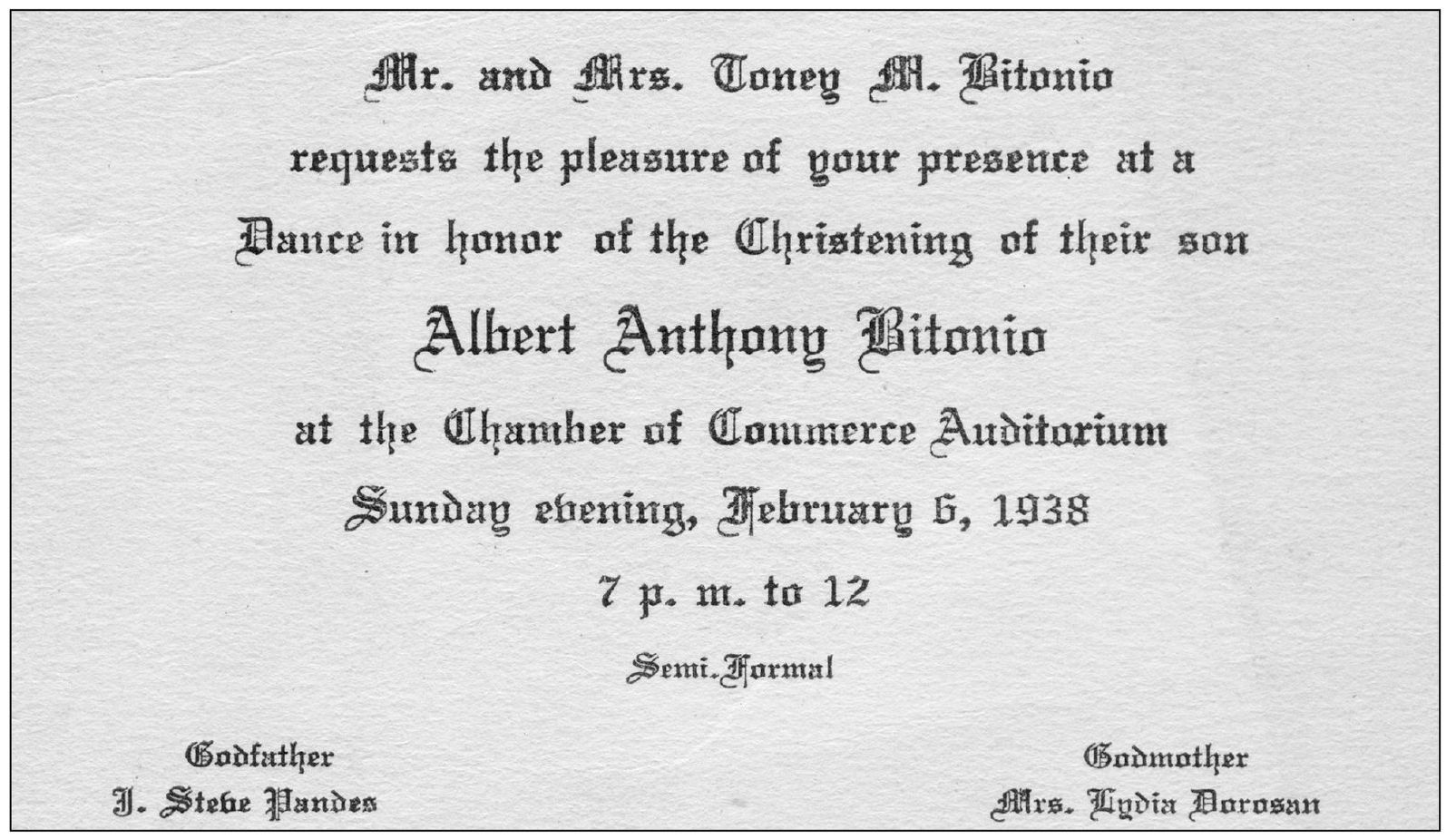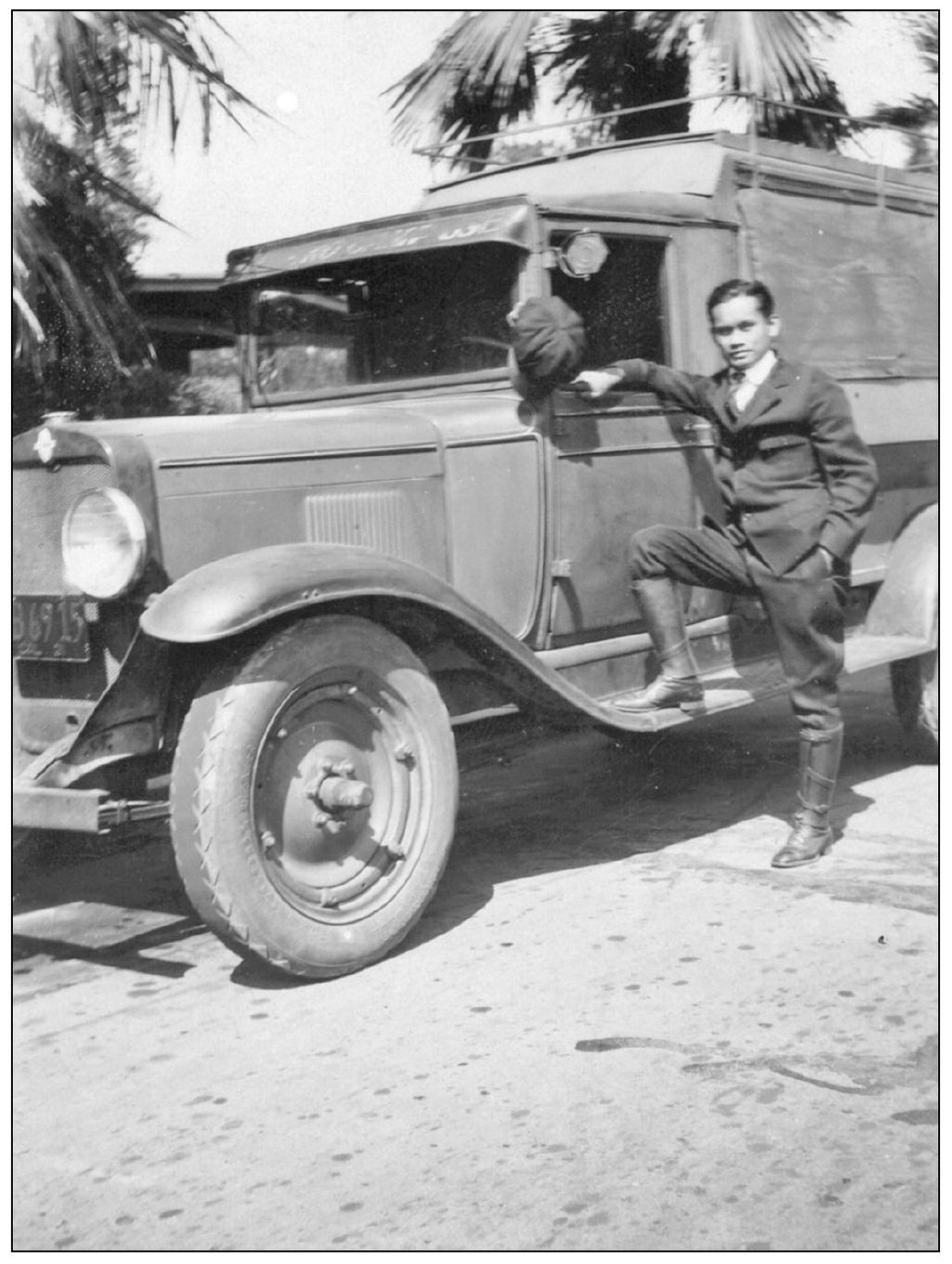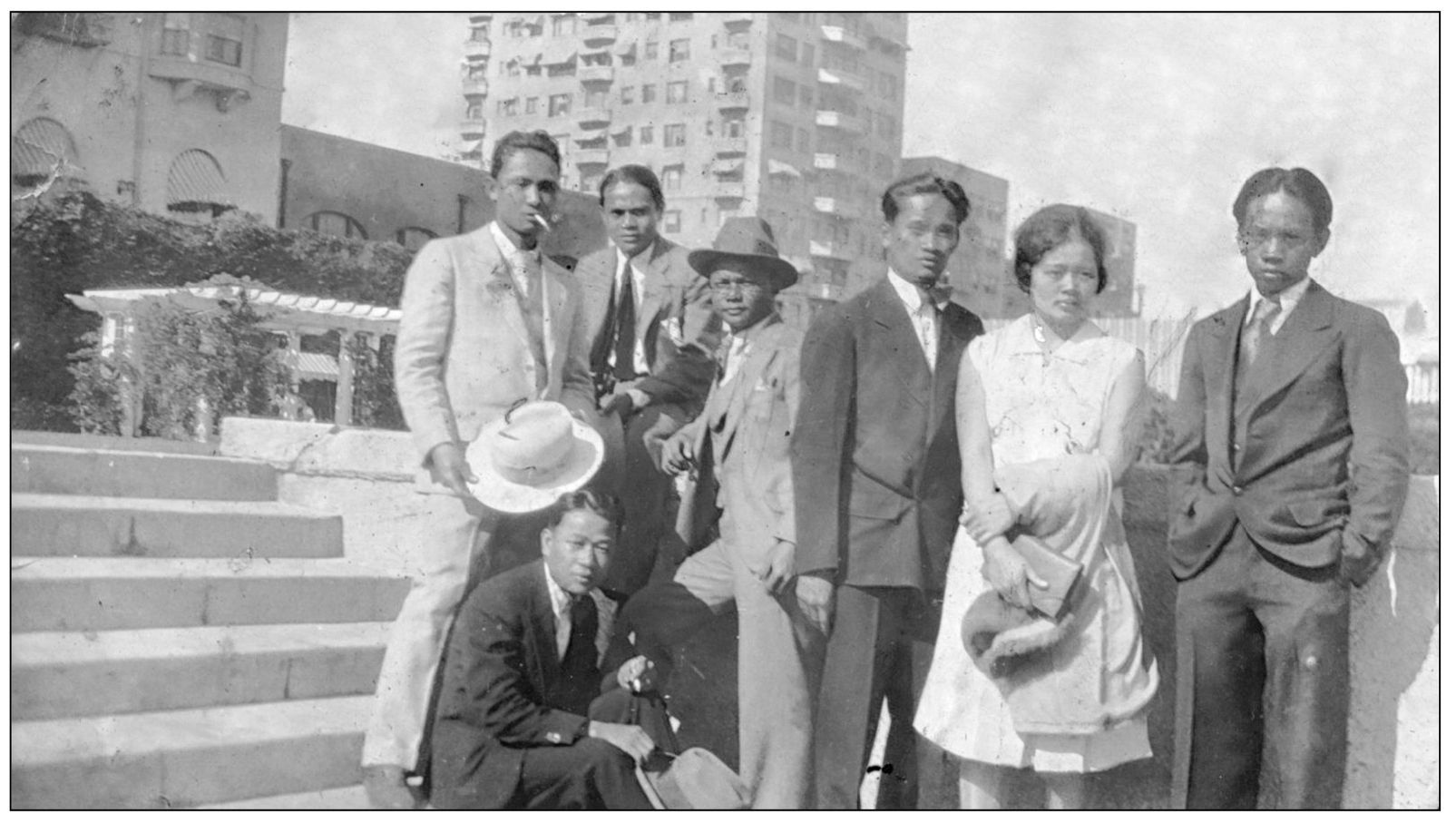One
COMING TO AMERICA TO LABOR AND SERVE 1910s1930s
The early Filipino pioneers came into Los Angeles South Bay area as early as the 1910s, lured by the promise of making it rich and with intentions of sending money back to their families in the Philippines. Of the many provinces providing their young men to work in America, a large portion came from the Ilocos regions in northern Luzon. Later this entire generation of vibrant, eager, and hardworking men would collectively be called Manongs , a title of respect for an Ilocano elder. The few Filipino women who came in this period as wives and their daughters were considered the orchids of this largely bachelor society. Others arrived by joining the ranks of the U.S. military, many recruited at Sangley Point, Philippines, for the U.S. Navy. Here Al Bitonio (the child) poses in front of his family home in San Pedro with his uncles. (Courtesy of Al Bitonio Collection.)
Filipinos gathered in hotels, cafs, and barbershops in San Pedro, most of them near the corner of Beacon and Sixth Streets. The photograph above was taken on June 5, 1926, at the Tumble-In-Caf. The Pearl Harbor Caf (below) continued business until the 1960s. However, this area was later redeveloped, and Filipino businesses appeared in Wilmington, Long Beach (along Santa Fe Avenue), and Carson (on Main Street). The barbershops, like the Olympic Barber Shop owned by D. Salvador, on the left below, also served Filipinos secondarily as underground betting bookies. (Both courtesy of San Pedro Historical Society.)
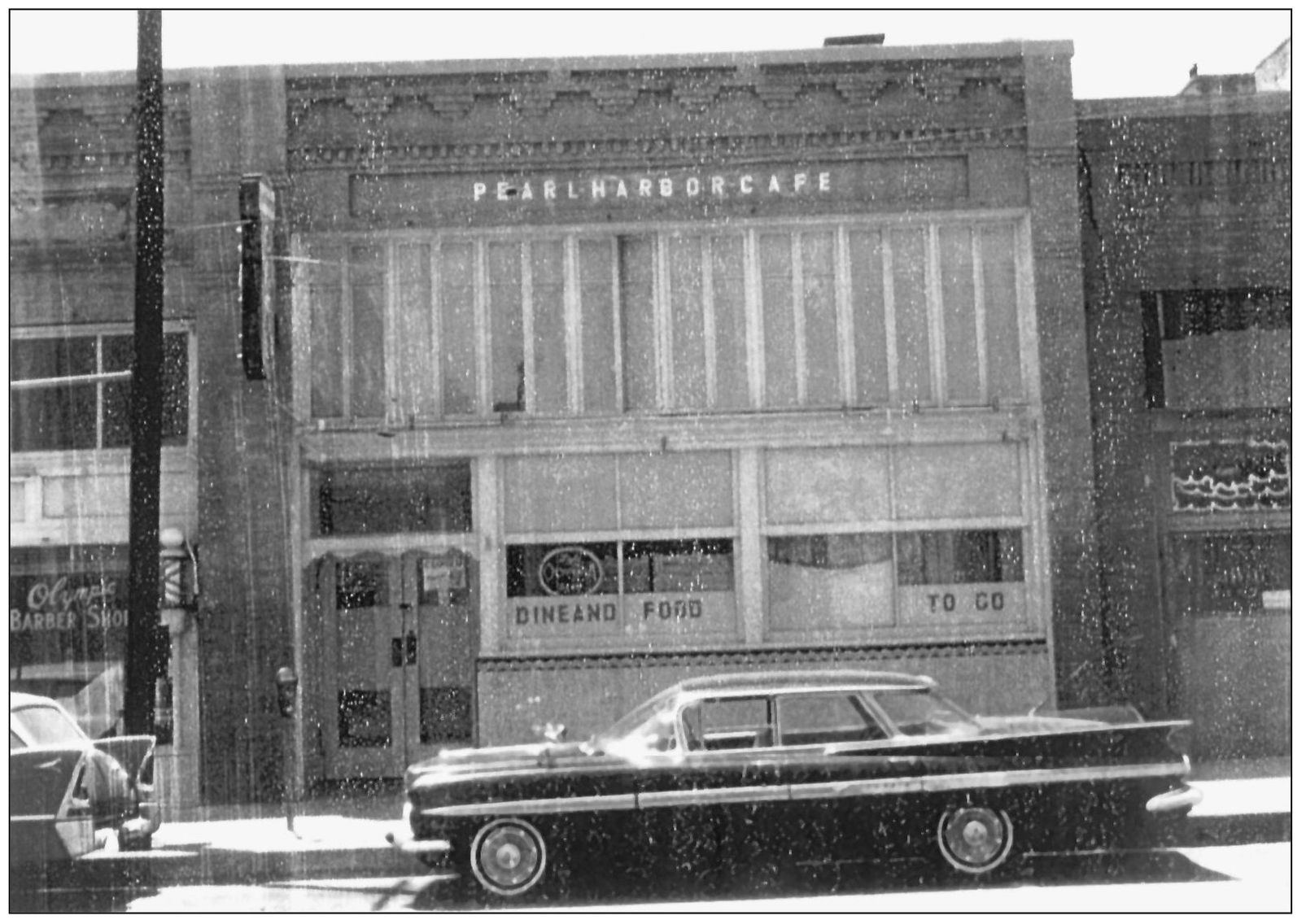
This form shows the first person in Long Beach to register for the U.S. Army for World War I was Isidro Canlas, a Filipino. Isidro was born in Bacolor, Pampanga, and arrived in 1905 at Buffalo, New York. The next year, he traveled to Denver, Colorado, to be a student and worked as a muleskinner. He followed his employer to Long Beach, California, in 1910 and in 1930 worked as foreman for a cement plant. When told (below) he could not marry Lydia Davalos in 1917 he said, to the Long Beach Press-Telegram , This is my country, even though the clerk at Los Angeles figures me out as unfit to marry a girl from Mexico. They were married in Tijuana because, at that time, California laws prevented interracial marriages. He was classified as Malay, and she was considered white. (Both courtesy of Eloisa Gomez Borah Research Collection.)
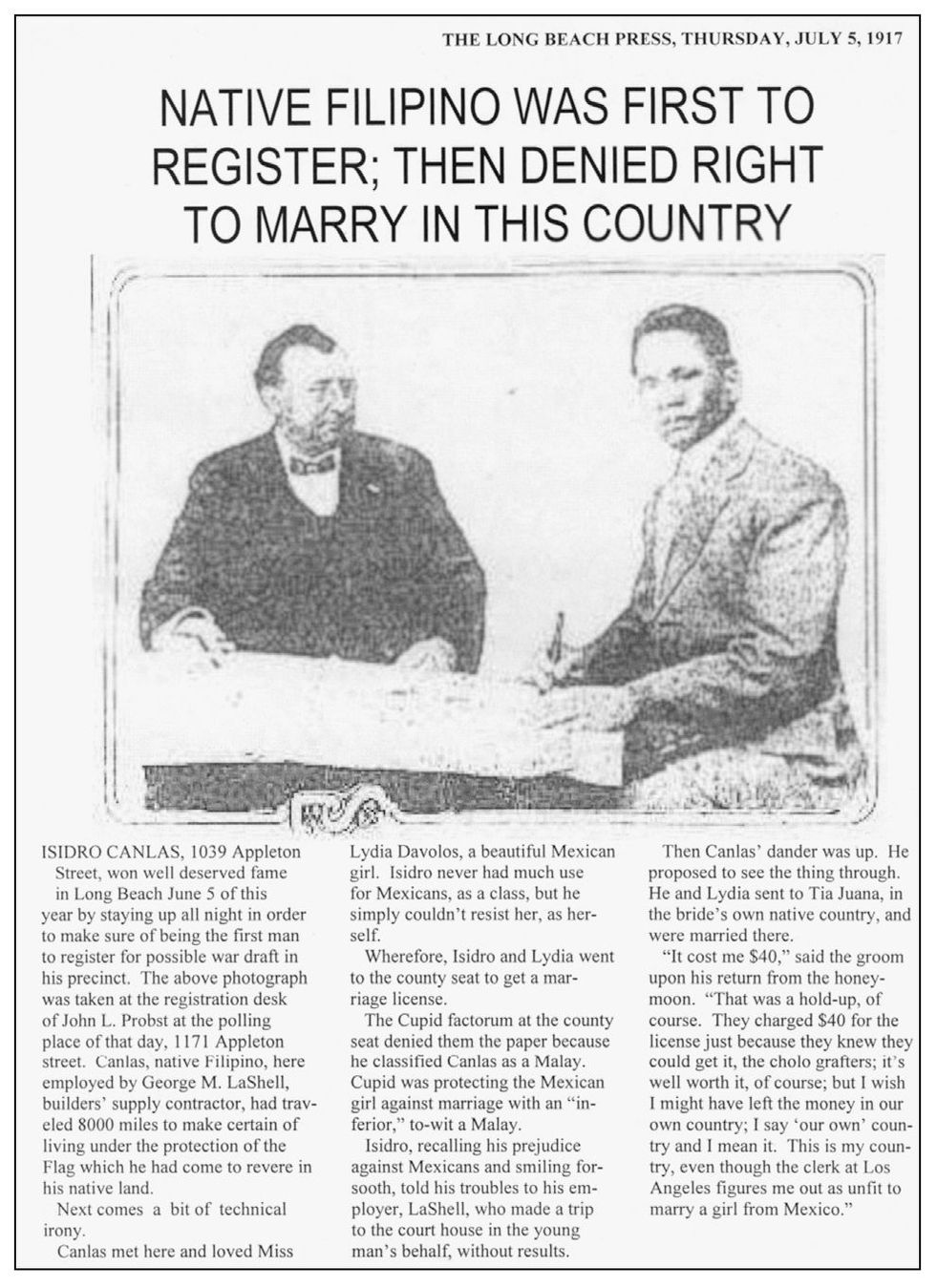
Because of the California anti-miscegenation laws forbidding whites to marry nonwhites, couples were forced to go out of state or to Tijuana to get married. Al Bitonio was the result of such a union. Born and raised in San Pedro, Al is now an archival assistant for the San Pedro Bay Historical Society. Here is the announcement card in San Pedro celebrating his baptism in 1938. Below, on the grass are baby Al and his father, Tony Bitonio, and standing are, from left to right, his mother, Mary Bitonio, and godparents, Steve Pandes and Lydia Dorosan. (Both courtesy of Al Bitonio Collection.)
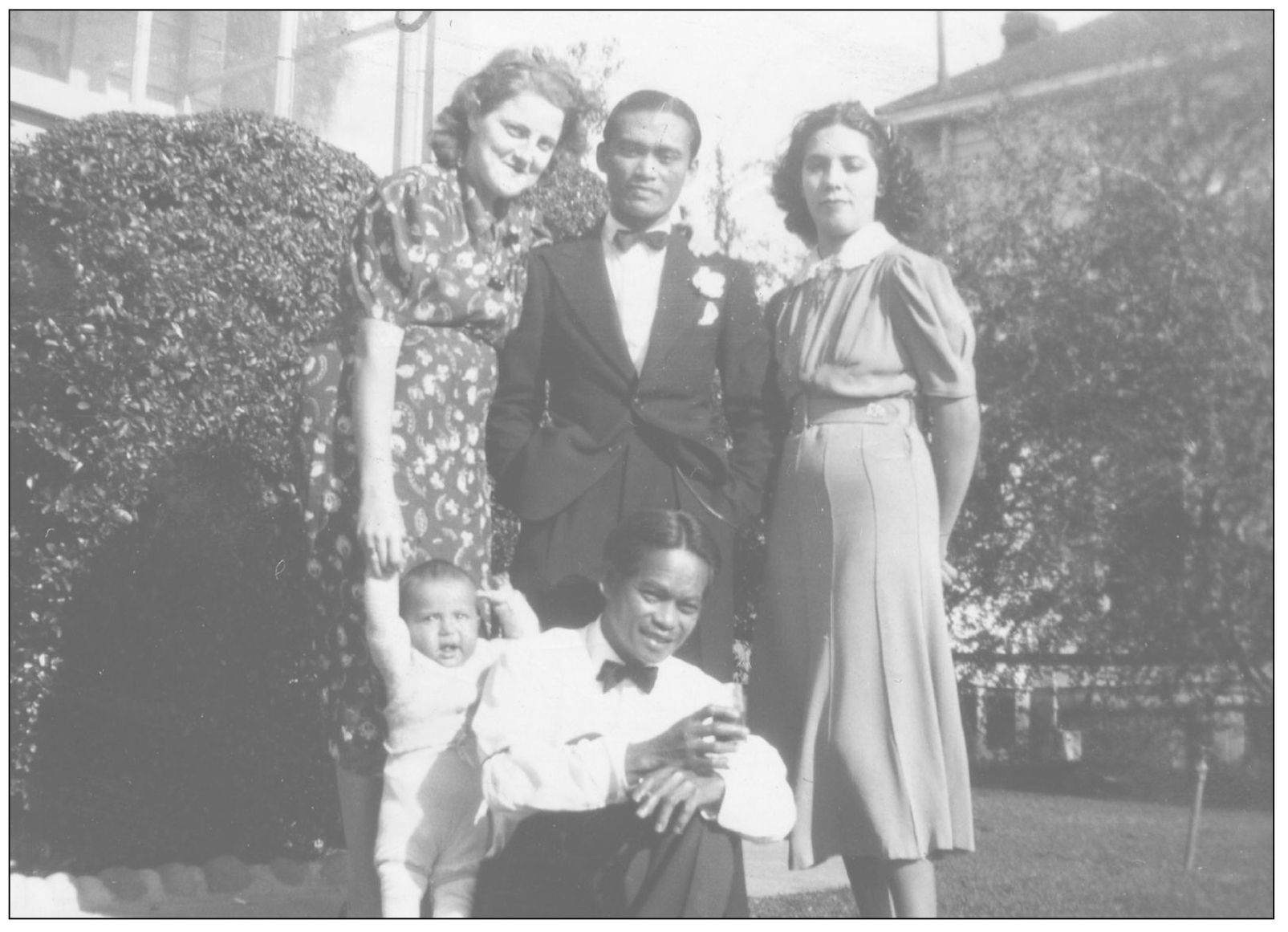
Marcelino Ines came as a labor contractor in 1920s along with his wife, Amalia. Working in Los Angeles and in the South Bay, they had their first child, Laura, in San Fernando, California, and later a son, Marcelino Jr., while in Stockton, California. Having been born in the United States, both Laura and Junior were American citizens. The family returned to the Philippines, and more children were added. (Courtesy of Laura Rossi Collection.)
This photograph was taken in Long Beach in 1928. From left to right are unidentified, Eusebio Sotello, Fred Bayuga (kneeling), Santiago Inis, Castor Follosco, Marcelino and Amalia Ines, and Apolinario Inez. (Courtesy of Laura Rossi Collection.)

